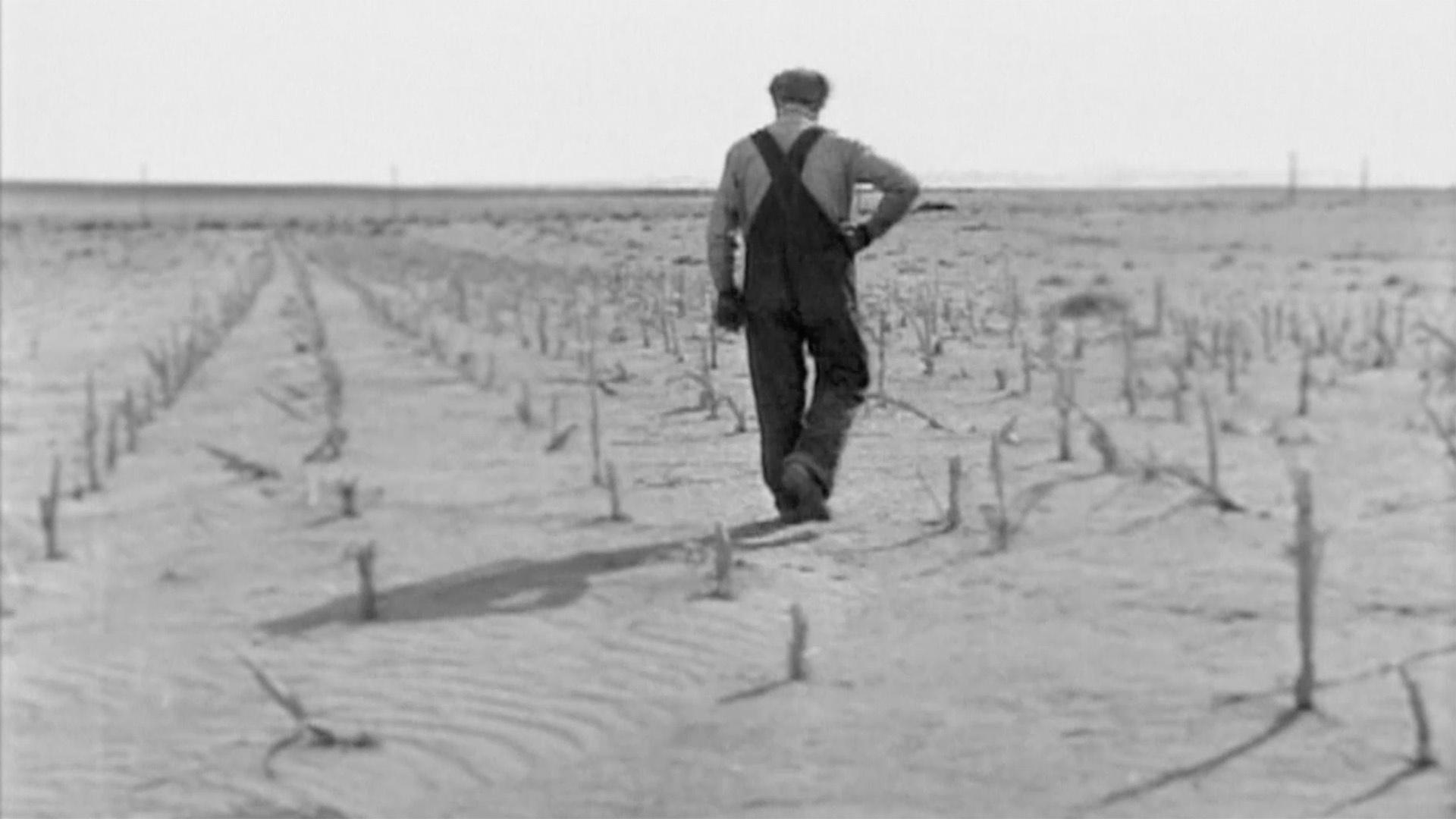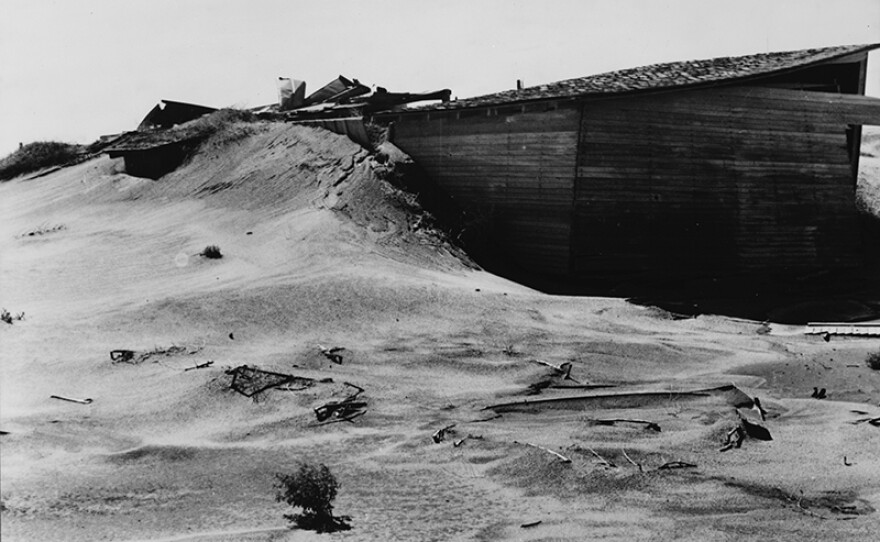Communiqué
They were called ‘Black Blizzards,’ dark clouds reaching miles into the sky. “Surviving the Dust Bowl” on AMERICAN EXPERIENCE – July 14 at 11 pm
< < Back to they-were-called-black-blizzards-dark-clouds-reaching-miles-into-the-sky-surviving-the-dust-bowl-on-american-experience-august-31-at-10-pmAmerican Experience Surviving the Dust Bowl
Sunday, July 14 at 11:00 p.m.
The Remarkable Story of the Determined People Who Endured Drought, Dust, Disease and Even Death for Nearly a Decade
In 1931 the rains stopped and the “black blizzards” began. Powerful dust storms carrying millions of tons of stinging, blinding black dirt swept across the Southern Plains — the panhandles of Texas and Oklahoma, western Kansas, and the eastern portions of Colorado and New Mexico. Topsoil that had taken a thousand years per inch to build suddenly blew away in only minutes. One journalist traveling through the devastated region dubbed it the “Dust Bowl.”
Surviving the Dust Bowl is the remarkable story of the determined people who clung to their homes and way of life, enduring drought, dust, disease — even death — for nearly a decade. Less well-known than those who sought refuge in California, typified by the Joad family in John Steinbeck’s The Grapes of Wrath, the Dust Bowlers who stayed overcame an almost unbelievable series of calamities and disasters. Produced and written by Chana Gazit and executive produced by Mark Samels.
 “Only one-quarter of the Dust Bowlers fled to California — most stayed, persevering through ten grueling years,” said producer Chana Gazit. “I was intrigued by their stories — their stamina and resilience to battle through frighteningly powerful, devastating wind and dust storms.”
“Only one-quarter of the Dust Bowlers fled to California — most stayed, persevering through ten grueling years,” said producer Chana Gazit. “I was intrigued by their stories — their stamina and resilience to battle through frighteningly powerful, devastating wind and dust storms.”
The first major influx of farmers into the Southern Plains came at the turn of the century. Lured by a land lush with shrubs, grasses, and soil so rich it looked like chocolate, the farmers didn’t realize that what they were witnessing was but a brief respite in an endless cycle of rain and drought. Unaware, they enjoyed great harvests and raced to turn every inch of the Southern Plains into profit.
But in the summer of 1931, the rains disappeared. Crops withered and died. There had always been strong winds and dust on the Plains, but now over-plowing created conditions for disaster. The land became parched, the winds picked up and the dust storms began. They rolled in without warning, blotting out the sun and casting entire towns into darkness. Afterward, there was dust everywhere — in food, in water, and in the lungs of animals and people.
In 1932, the weather bureau reported 14 dust storms. The next year, the number climbed to 38. People tried to protect themselves by hanging wet sheets in front of doorways and windows to filter the dirt. They stuffed window frames with gummed tape and rags. But keeping the fine particles out was impossible. The dust permeated the tiniest cracks and crevices. Through it all, the farmers kept plowing, kept sowing wheat, kept waiting for rain.
By 1934, the storms were coming with alarming frequency. Residents believed they could determine a storm’s point of origin by the color of the dust: black from Kansas, red from Oklahoma, gray from Colorado or New Mexico.
The dust was beginning to make living things sick. Animals were found dead in the fields, their stomachs coated with two inches of dirt. People spat up clods of dirt as big around as a pencil. An epidemic raged throughout the Plains: they called it dust pneumonia.
 By the end of 1935, with no substantial rainfall in four years, some residents gave up. Dust Bowlers watched as their neighbors and friends picked up and headed west in search of farm jobs in California. They packed their meager belongings and didn’t even bother to shut the door behind them. They just drove away. Banks and businesses failed, churches shut their doors, schools were boarded up.
By the end of 1935, with no substantial rainfall in four years, some residents gave up. Dust Bowlers watched as their neighbors and friends picked up and headed west in search of farm jobs in California. They packed their meager belongings and didn’t even bother to shut the door behind them. They just drove away. Banks and businesses failed, churches shut their doors, schools were boarded up.
Yet even with the world crumbling around them, three-quarters of the Dust Bowlers chose to stay. Some prayed for rain; others went in for more drastic measures. Billing himself as a rainmaker, explosives expert Tex Thornton claimed he could blast rain out of the sky. John McCarty, editor of the Dalhart Texan, created The Last Man’s Club, designed to promote a spirit of courage. Judge Cowen recalls the pledge members had to sign: “In the absence of an act of God, serious family injury, or some other emergency, I pledge to stay here as the last man and to do everything I can to help other last men remain in this country. We promise to stay here `til hell freezes over and skate out on the ice.”
In 1936, Dust Bowlers saw their first ray of hope: an innovative plan spearheaded by Hugh Bennett, a leading agricultural expert, to conserve valuable topsoil. He persuaded Congress to approve a federal program that would pay farmers to use new farming techniques. By 1937, the soil conservation campaign was in full swing. By the next year the soil loss had been reduced by 65 percent. Though the new techniques were taking root and the situation had improved, the drought dragged on.
Finally, in the fall of 1939, the skies opened. “It was a very emotional time, when you’d get rain, because it meant so much to you. You didn’t have false hope then,” said Floyd Coen of Kansas. “When the rain came, it meant life itself. It meant a future.”

